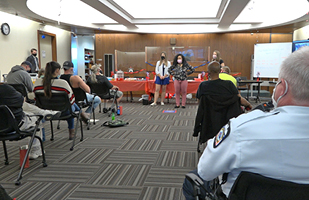Supreme Court Partnership First to Monitor Drug Court Participants

In a collaboration with the Ohio Board of Pharmacy, the Supreme Court will utilize information from active adult drug court participants and report it to the state’s prescription drug monitoring program.

In a collaboration with the Ohio Board of Pharmacy, the Supreme Court will utilize information from active adult drug court participants and report it to the state’s prescription drug monitoring program.
The Ohio Supreme Court is helping to bridge the information gap between the criminal justice system and healthcare providers as part of a landmark achievement for treating people struggling with substance use disorders.
In a collaboration with the Ohio Board of Pharmacy, the Supreme Court will utilize information from active adult drug court participants and report it to the state’s prescription drug monitoring program known as OARRS – the Ohio Automated Rx Reporting System.
It’s the first such program in the United States to have a direct notification method between the judicial and healthcare realms to prevent pharmaceutical misuse.
“The specialized docket courts and the treatment community have always sought innovative ways to tackle the drug epidemic,” Chief Justice Maureen O’Connor said. “This is the latest example of Ohio being at the forefront with alternative measures to address complex issues.”
The purpose of the prescription drug monitoring program is to supply clinicians statewide with a resource that contains the most accurate data to determine whether prescribing a controlled substance is appropriate for a patient.
“OARRS is an invaluable resource for prescribers and pharmacists in determining whether a controlled substance prescription is appropriate for a patient,” said Steven W. Schierholt, the pharmacy board executive director. “We are proud to collaborate with the Ohio Supreme Court to promote transparency and improved data sharing between the criminal justice system and the healthcare system.”
Participants in a certified drug court – whose medications qualify as controlled substances and dangerous drugs – will be flagged to determine if there is a treatment conflict with those medications.
Since there isn’t a universal database between the courts, law enforcement, and the healthcare community, treatment providers often might not be aware of a history or possible pharmaceutical issue for those afflicted by substance use issues.
The initiative’s development spanned two years and is funded by the U.S. Department of Justice.
For more information on OARRS, visit pharmacy.ohio.gov/OARRS.


